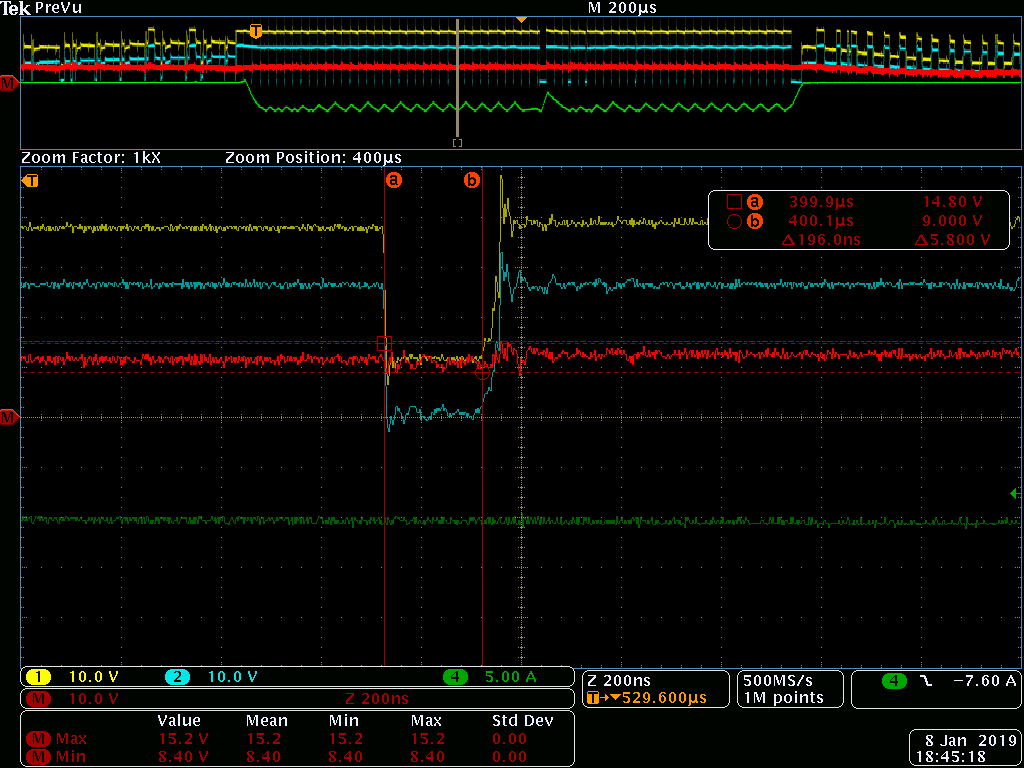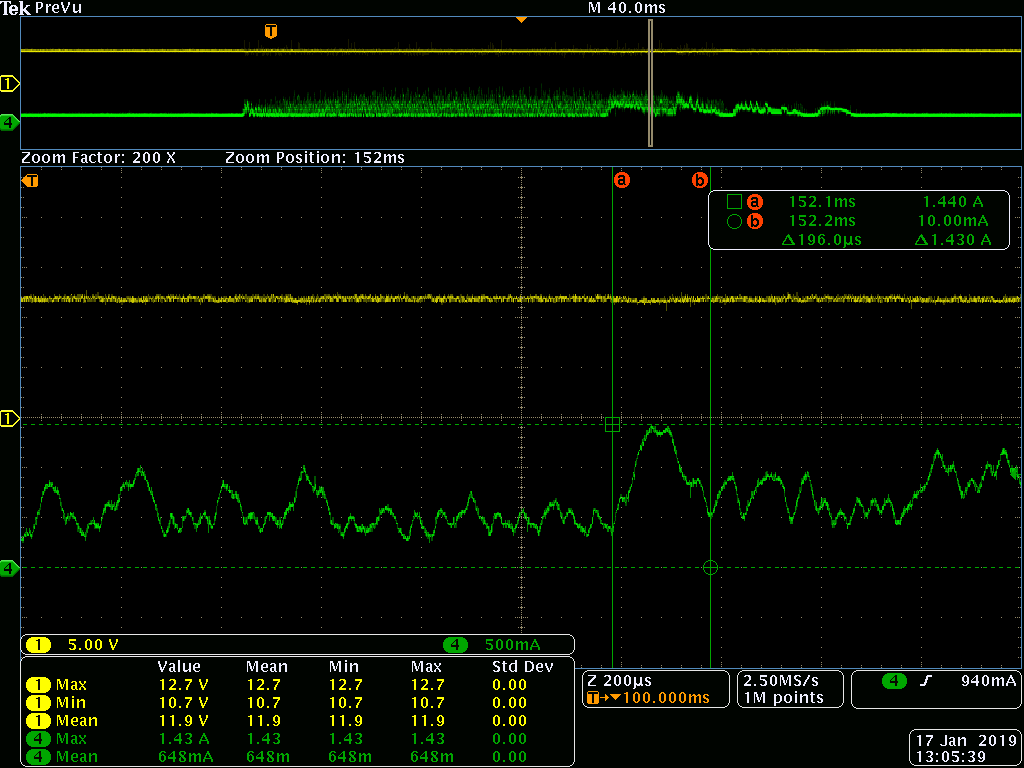Hello,
We are using the DRV8332 to drive a 28V BLDC motor for an EMA application and are looking for guidance regarding two failures we have experienced:
1) We have followed the reference design and are using 0.1uF, 100V bootstrap capacitors with close placement to the IC pins. We have observed failure of the bootstrap diode (reading open) on phase B (checked with diode tester from GVDD_B to BST_B). Using 0.1uF, we see failure after prolonged use (~Tens of hours). As an experiment, we increased the value to 0.22uF and saw immediate and identical failure. This seems to indicate damage to the bootstrap diode due to increased in-rush current through the bootstrap cap (the datasheet mentions as much, recommending a series R for larger cap values). Do you have guidance on bootstrap cap value selection? Especially based on PWM frequency or load current if there is such a dependency or recommendation?
2) We have also seen failures at hot temperatures (~85C Ta) where the unit reports numerous UV faults, eventually damaging the high-side FET and shorting power to ground through the IC. Based on note 9.2.1.2.2 Current Requirement of 12 V Power Supply, the data sheet suggests that the 12V current supply requirement may "increase significantly" at higher temperatures, e.g. >125C. Can you elaborate on what "increase significantly" means? By how much? At what temperatures? Is there a curve or relationship for current vs temp that can be deduced based on load current? Our load current has a peak of 10A and we are driving 2x DRV8332's from a single 12V switching regulator that is capable of 500mA. The guideline seems to indicate that it should maximally be designed for 10% of the load current which would mean 0.1*10A*2 = 2A (up from 100mA??), is this correct?
Thanks,
- Victor




